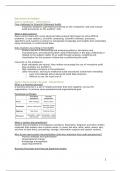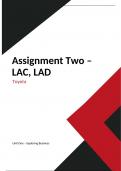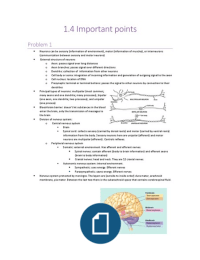What is budgeting ?
Budgeting is the process of building budgets, i.e. a quantification of the resources to be acquired and
used for a future period of time to achieve a plan.
A budget is the detailed document translating in financial terms a plan of action over a
limited time horizon, typically a year. It specifies short-term financial objectives and the
amount of resources needed to achieve these objectives. It can be broken down to shorter
periods, typically quarters and months
Budgeting relies heavily on product costing and cost estimation. It is also necessary for the
implementation of variance analysis. It is the first step of a financial implementation of the control
cycle popularized by Edward Deming: budgeting is planning, variance analysis is checking, and cost
estimation (correction of the plan) or differential analysis (correction of what is done) is acting.
What are the purposes and process of budgeting ?
The functions are extremely important as they orient and support resource acquisition, allocation,
and utilization. This importance justifies to a large extent the vast amount of time and resources that
organizations invest in the budgeting process itself. Broadly speaking, there are four purposes:
- Strategy formulation
- Resource evaluation, acquisition, and allocation
- Delegation and coordination
- Control and performance evaluation
Budgeting is an opportunity for managers to think about the future environment (forecasting), define
what they want to achieve (setting goals), and plan how they intend to achieve their objectives
(formulating a strategy). It is also an opportunity to reveal potential disagreements and foster
debates about goals, strategies, and tactics in a context which does not require rapid decision.
The attention to the future allows mangers to anticipate potential challenges and opportunities and
give them the give to design and assess several courses of actions in different scenarios. Properly
done, budgets provide simulations about the likely effects of strategic plans. Such simulations also
facilitate learning, showing how operating risks and profit are sensitive to specific estimates,
forecasts, and decisions.
Another important function of budgets is to identify and assess the amount of resources the
organization will need to run its operations (resource evaluation), negotiate these resources with
investors and suppliers (resource acquisition), and decide on which activities these resources should
be invested in priority (resource allocation)
Resource evaluation some resources cannot be obtained quickly, budgets are quantitative
expressions of planned consumption of resources as well as cash inflows and outflows. They reveal
future needs for resources, temporary or permanent cash shortages or excesses. More importantly,
they reveal these early enough for the organization to make the necessary arrangements in time
Resource acquisition budgets allow organizations not only to justify their need for additional
resources, but also negotiate with investors the conditions of acquisition of these additional
resources based on expected risks and returns
Resource allocation budgets reflect how limited financial resources should be distributed across
the organization. Since capacity is not flexible, related decisions need to be taken long in advance
, In large organizations, budgets also serve the very important purpose of communicating
organizational goals to, and coordinating the actions of, many interdependent yet autonomous
managers. Budgets are formal documents synthesizing what each manager is expected to do in the
next year. Moreover, budgets communicate a shared understanding of the business model.
A last function of budgets is to serve as a benchmark against which actual performance can be
compared to assess whether goals were achieved or whether some corrective action should be
taken. Performance metrics showing gaps between expectations and realizations trigger corrective
actions and make people accountable for what they do or do not.
Finally the budget is a way to set S.M.A.R.T. goals for managers, and to evaluate them based on
whether they have met agreed upon targets.
Before budgeting process even starts, top management usually defines and communicates strategic
plans which specify long-term (5 years or more) strategic orientations for the company. This multi-
year strategic plan is an important foundation for budgeting, but technically is it not part of this
yearly process.
A strategic plan is the top management’s vision of what the organization has to achieve in
the long term
The real starting point of budgeting is a sales forecast produced by the sales and marketing
department. This document indicates the expected sales volumes for the different products and
services of the company. It proceeds from expectations about the future competitive environment
and from the company’s objectives and strategies. The sales forecast is thus communicated to
production. Based on this forecast, available capacity, and inventory policies, the production
department establishes a production schedule specifying the volumes to be produced in each period
to satisfy the demand. If a feasible production schedule is established, the production department
can communicate it needs for raw material to the purchasing department and its needs for labor to
the human resources department.
Production budget = direct material purchase budget + direct labor budget + manufacturing
overhead budget
Administration builds an administrative budget, since those costs are discretionary, they are set
independently of the expected volume of activity.
Operating budgets cover the organization’s planned operating activities for a particular
period of time. They gather the sales, production, procurement, and administrative budgets
When the available capacity of production is not sufficient to meet the expected demand, production
managers can send a request for capital expenditures (CAPEX requests) typically to the finance
department.
A capital budget is a budget allocating money for the acquisition or maintenance of long-
term assets such as land, buildings, and equipment
The finance department gathers all these budgets (sales budget, production budget, procurement
budgets, administrative budget, and capital budgets) and uses them to build a cash budget
summarizing cash inflows and outflows from operating and investing activities.
A cash budget is an estimation of the cash flows of a business over a specific period of time
Budgeting is the process of building budgets, i.e. a quantification of the resources to be acquired and
used for a future period of time to achieve a plan.
A budget is the detailed document translating in financial terms a plan of action over a
limited time horizon, typically a year. It specifies short-term financial objectives and the
amount of resources needed to achieve these objectives. It can be broken down to shorter
periods, typically quarters and months
Budgeting relies heavily on product costing and cost estimation. It is also necessary for the
implementation of variance analysis. It is the first step of a financial implementation of the control
cycle popularized by Edward Deming: budgeting is planning, variance analysis is checking, and cost
estimation (correction of the plan) or differential analysis (correction of what is done) is acting.
What are the purposes and process of budgeting ?
The functions are extremely important as they orient and support resource acquisition, allocation,
and utilization. This importance justifies to a large extent the vast amount of time and resources that
organizations invest in the budgeting process itself. Broadly speaking, there are four purposes:
- Strategy formulation
- Resource evaluation, acquisition, and allocation
- Delegation and coordination
- Control and performance evaluation
Budgeting is an opportunity for managers to think about the future environment (forecasting), define
what they want to achieve (setting goals), and plan how they intend to achieve their objectives
(formulating a strategy). It is also an opportunity to reveal potential disagreements and foster
debates about goals, strategies, and tactics in a context which does not require rapid decision.
The attention to the future allows mangers to anticipate potential challenges and opportunities and
give them the give to design and assess several courses of actions in different scenarios. Properly
done, budgets provide simulations about the likely effects of strategic plans. Such simulations also
facilitate learning, showing how operating risks and profit are sensitive to specific estimates,
forecasts, and decisions.
Another important function of budgets is to identify and assess the amount of resources the
organization will need to run its operations (resource evaluation), negotiate these resources with
investors and suppliers (resource acquisition), and decide on which activities these resources should
be invested in priority (resource allocation)
Resource evaluation some resources cannot be obtained quickly, budgets are quantitative
expressions of planned consumption of resources as well as cash inflows and outflows. They reveal
future needs for resources, temporary or permanent cash shortages or excesses. More importantly,
they reveal these early enough for the organization to make the necessary arrangements in time
Resource acquisition budgets allow organizations not only to justify their need for additional
resources, but also negotiate with investors the conditions of acquisition of these additional
resources based on expected risks and returns
Resource allocation budgets reflect how limited financial resources should be distributed across
the organization. Since capacity is not flexible, related decisions need to be taken long in advance
, In large organizations, budgets also serve the very important purpose of communicating
organizational goals to, and coordinating the actions of, many interdependent yet autonomous
managers. Budgets are formal documents synthesizing what each manager is expected to do in the
next year. Moreover, budgets communicate a shared understanding of the business model.
A last function of budgets is to serve as a benchmark against which actual performance can be
compared to assess whether goals were achieved or whether some corrective action should be
taken. Performance metrics showing gaps between expectations and realizations trigger corrective
actions and make people accountable for what they do or do not.
Finally the budget is a way to set S.M.A.R.T. goals for managers, and to evaluate them based on
whether they have met agreed upon targets.
Before budgeting process even starts, top management usually defines and communicates strategic
plans which specify long-term (5 years or more) strategic orientations for the company. This multi-
year strategic plan is an important foundation for budgeting, but technically is it not part of this
yearly process.
A strategic plan is the top management’s vision of what the organization has to achieve in
the long term
The real starting point of budgeting is a sales forecast produced by the sales and marketing
department. This document indicates the expected sales volumes for the different products and
services of the company. It proceeds from expectations about the future competitive environment
and from the company’s objectives and strategies. The sales forecast is thus communicated to
production. Based on this forecast, available capacity, and inventory policies, the production
department establishes a production schedule specifying the volumes to be produced in each period
to satisfy the demand. If a feasible production schedule is established, the production department
can communicate it needs for raw material to the purchasing department and its needs for labor to
the human resources department.
Production budget = direct material purchase budget + direct labor budget + manufacturing
overhead budget
Administration builds an administrative budget, since those costs are discretionary, they are set
independently of the expected volume of activity.
Operating budgets cover the organization’s planned operating activities for a particular
period of time. They gather the sales, production, procurement, and administrative budgets
When the available capacity of production is not sufficient to meet the expected demand, production
managers can send a request for capital expenditures (CAPEX requests) typically to the finance
department.
A capital budget is a budget allocating money for the acquisition or maintenance of long-
term assets such as land, buildings, and equipment
The finance department gathers all these budgets (sales budget, production budget, procurement
budgets, administrative budget, and capital budgets) and uses them to build a cash budget
summarizing cash inflows and outflows from operating and investing activities.
A cash budget is an estimation of the cash flows of a business over a specific period of time










